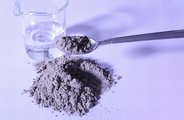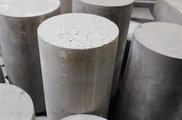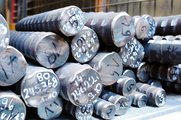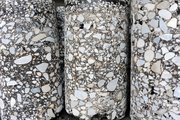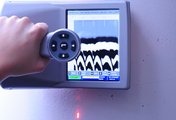Research at the Centre for Building Materials
The cbm is involved in research assignments funded by both the public and private sectors.
Research at the cbm is divided into topics appropriate to the working groups shown below. In addition, a project group works on modelling the behaviour of materials and a second one is working on new forms of reinforcement for concrete.
The Working Group Binders and Concrete Additions is involved in the research and development of novel, effective and energy-saving binders as well as efficient treatment processes and the activation of pozzolanic additions at early hydration times. Attention also focusses on explaining damage mechanisms in concrete during, for example, the alkali silica reaction or chemical attack by aggressive media. Approval and surveillance testing of binders and additions is part of the routine materials investigations performed by the Working Group.
Concrete is the most commonly used building material and is suitable for the realization of architectural visions in a virtually unlimited variety of forms. In recent years, many innovations in concrete technology show that concrete possesses the potential to shape the architecture of the future. Thus the Working Group Concrete Technology concentrates on the essential aspects of the material concrete - from production (mixing) via processing (rheology) to the mechanical properties and, finally, durability. Attention is focussed particularly on construction concrete (UHPC, self-compacting concrete, easily workable concrete, fair-faced concrete), sustainability (resource-saving construction with UHPC, use of fibres) as well as durability (freeze-thaw and freeze-thaw deicing salt resistance). Other research areas include concrete pavement construction and bonded anchors.
Steel gives strength to concrete. However, the durability of reinforced concrete can be significantly impaired by corrosion resulting in substantial economic losses. The material steel and damage by corrosion are central research topics of the Working Group Steel and Corrosion. As well as modelling the progress of damage to steel in concrete, attention is focussed on probabilistic service life prediction as a help for decision-making during the design of durable reinforced concrete structures. Optimized inspection and maintenance strategies are developed and the reliability of corrosion detection in reinforced concrete analysed. In addition, combined effects, such as dynamic action and corrosion, and the effectiveness of coated reinforcement are scientifically investigated.
The Working Group Chemistry provides a link between applied research topics in civil engineering and basic research. As well as helping with all chemical questions, WG Chemistry supports the other working groups by providing routine chemical analysis and experiments for special project work. Research at the Working Group centres on topics like acid attack on concrete and the hydration of complex binder systems. The group possess a high level of expertise in the application of state-of-the-art solid state NMR spectroscopy.
Working Group Bituminous Mineral Construction Materials is concerned with research on asphalt as well as its components, bitumen, bitumen-based binders and mineral aggregate. The effect of aggregate particles on the properties of concrete is also a major field of interest. The research topics considered by the Working Group are practical and geared to the needs of modern engineering.
The Working Group is concerned with all non-destructive testing methods for investigating materials, structural components and structures. A central aspect of quality control and inspection is the observation of things which are invisible to the naked eye. In structural health monitoring, methods are developed for detecting and locating damage.
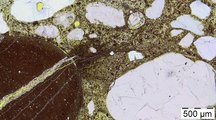
During the alkali-silica reaction (ASR), alkali-reactive siliceous aggregates react with the alkalis in the pore solution of the concrete to form an expandable alkali-silica gel. When exposed to humid conditions, the expansion of the alkali-silica gel can cause considerable swelling pressures, which may damage the concrete and thereby affects its durability.
The ASR project group conducts standardized ASR test methods, assesses laboratory and field specimens, characterizes alkali-silica gel structures, models gel structures and investigates the inhibiting mechanisms of supplementary cementitious materials and the effect of de-icing salts on damaging ASR in concrete.
